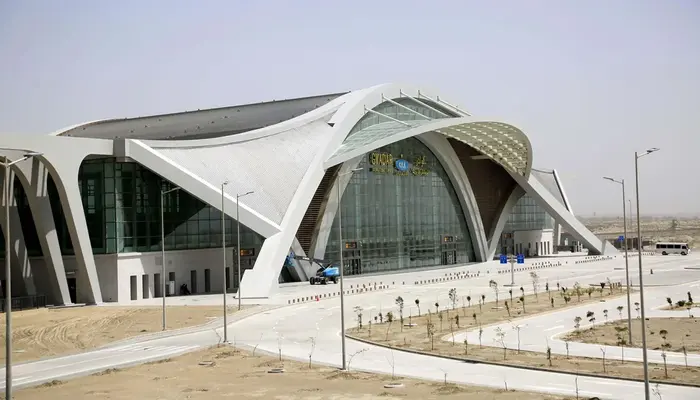
Pakistan’s New Gwadar International Airport, a $240 million project fully funded by China, remains idle months after its completion. With no passengers or flights, the airport raises questions about its purpose and the broader impact of the China-Pakistan Economic Corridor (CPEC).
An Empty Landmark in a Struggling City
Located in Gwadar, Balochistan, the airport boasts modern infrastructure and a 400,000-passenger capacity. However, the surrounding city of 90,000 residents faces severe water shortages, unreliable electricity, and a struggling economy. Despite promises of transformation, local development remains stagnant.
Authorities claim the airport is a game-changer for trade and tourism. However, many experts believe its primary purpose is to facilitate Chinese access to Gwadar rather than benefit locals. Azeem Khalid, an international relations expert, argues that China’s investments in the region focus on securing economic and strategic interests, not uplifting the local population.
CPEC and the Rising Conflict in Balochistan
The airport is part of CPEC, a multi-billion-dollar project linking China’s Xinjiang province to Pakistan’s Arabian Sea coast. While the initiative promises economic growth, it has also fueled long-standing tensions in Balochistan.
Separatist insurgents in the province accuse the Pakistani government of exploiting resources while neglecting local communities. Over the years, these groups have attacked both Chinese workers and Pakistani military forces, opposing the perceived foreign control over their homeland.
A City Under Heavy Security
To safeguard Chinese investments, the Pakistani government has increased military presence in Gwadar. The city is filled with checkpoints, barricades, and watchtowers. Roads frequently close for the safe passage of Chinese workers and Pakistani officials, disrupting daily life for locals.
Journalists face tight restrictions, and even places like Gwadar’s fish market are off-limits for media coverage. Khuda Bakhsh Hashim, a 76-year-old resident, recalls a time when Gwadar was open and peaceful. Before joining Pakistan, it was part of Oman and served as a key stop for ships heading to Mumbai.
“Now, we are constantly asked for identification,” says Hashim. “We are residents, yet we must prove who we are. Those asking should identify themselves first.”
Promises of Growth vs. Reality
The Pakistani government claims CPEC has created 2,000 jobs in the region. However, locals question whether these opportunities truly benefit Baloch residents or mostly attract workers from other provinces.
Meanwhile, Gwadar continues to suffer from water shortages due to drought and unchecked exploitation. Businesses struggle, and many locals remain jobless.
What’s Next for Gwadar’s Airport?
The New Gwadar International Airport was meant to symbolize progress. Instead, it stands as an empty reminder of the disconnect between large-scale projects and local needs. Until basic infrastructure, employment, and security improve, Gwadar’s transformation will remain a distant dream.
Follow us on Google News, Instagram, YouTube, Facebook,Whats App, and TikTok for latest updates












